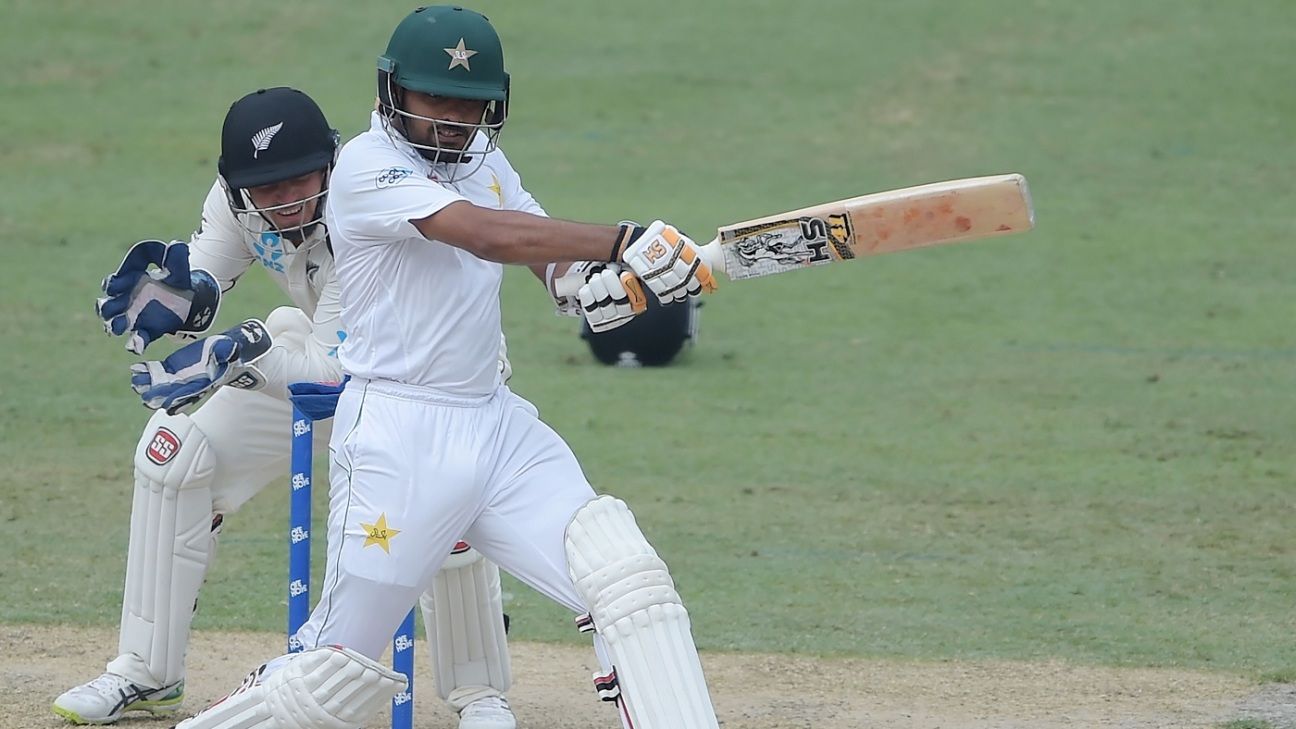For a man with a supposed inaptitude to Test cricket, Babar Azam does end up with an awful lot of big scores in the format. In his last four Test innings, the 24-year old has managed 92, 62, 13 and an unbeaten 127 on Sunday. It was his fifth 50-plus score in 10 innings this year, in which he averages nearly 68 with the bat. What Test inaptitude?
A quick glance through his run tallies across his fledgling career will answer that question, and explain his great relief at the innings he played on the second day in Dubai. For all of his prowess in 2018, Babar had never yet managed a three-figure score in this format, all the while scoring hundreds for fun in ODIs; he scored, remember, three of them in a row a couple of years back against West Indies. Besides, before 2018, his career average in Tests was under 24. It was nothing short of remarkable to see him struggle to get starts, given if you coloured the ball white and clad him in green, he would have surpassed that before your kettle had boiled.
It is an obscene simplification, of course, but obscenely simple is what Babar makes batting look. It would be particularly self-indulgent to assume saying this adds to the weight of expectations on him, but Pakistan haven’t had a middle-order batsman so cut out across formats since Inzamam-ul-Haq hung up his boots. There was, for a short while, the false dawn of Umar Akmal, but Babar keeps showing, time and again, he is the real thing. This was a player, still a very young player, mind you, seeing his ability to be competitive in Test cricket openly questioned, repeatedly told, at the very least, he was drafted in too early. He has come out the other side, and insisted the lack of a Test hundred never once weighed on his mind.
“There was no pressure [of scoring a Test hundred]”, Babar said. “I’d be lying if I say that not scoring a Test century was a burden on me. The difference is that I did the job today. My previous best scores will be counted as half-centuries. I had heard that scoring a Test century is special and that’s exactly what I experienced today. I was out on 99 against Australia. It’s definitely a relief to get over the line. I have gained a lot of confidence in the wake of scoring this hundred.
“In the UAE, the wickets are on the slower side. You can’t play through the line, you need to take your time and be patient.”
Patience would be an understatement. Babar, along with Haris Sohail, loomed large over the day’s proceedings, at the crease for over two sessions as they frustrated New Zealand while consolidating their position. All the while, they were aware one rash shot could see their work undone, but while Haris dug in, Babar took upon himself the responsibility of ensuring Pakistan had enough runs to declare before the end of the day’s play. One-twenty-seven runs off 263 balls doesn’t sound especially free-flowing, but other than Sarfraz Ahmed, who came in late with far less pressure, Babar had the highest strike rate of all. He was the one chiefly responsible for injecting some impetus into the innings, having his innings cut by a declaration short one ball after he smashed Ish Sodhi for a six and sought to get his team closer to 450.
“Our plan was to build partnerships. We were trying to complement each other,” he said. “If I played a poor shot, Haris would come and counsel me and vice versa. Our plan was to dig in deep.
“The ball isn’t coming onto the bat; it’s really slow. The spinners are getting purchase off the wicket. Hopefully our bowlers will benefit from the conditions as well. We are confident we’ll get them out cheaply.”
This isn’t just the brazen confidence of youth; far too many young players have found the burden of Test-match cricket, and indeed the pressure of holding up a famously fragile Pakistan batting order, too heavy to bear. Babar, however, seems to be cut from a different cloth, and if he can sustain the hunger and confidence that has seen him rise to every challenge thrown his way so far, his path to becoming a modern all-format great seems inexorable.
